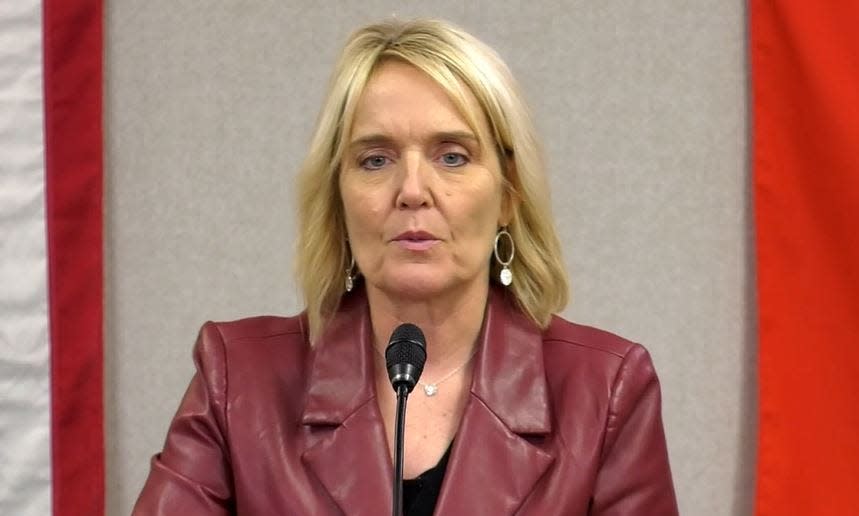Annual report cards for Missouri schools released — here's how Ozarks districts scored

Days before the start of winter break — and months after students took reading and math tests required by the state — Missouri has made public the district and school-level report cards for last year.
The 2022-23 Annual Performance Reports released Monday provide a broader look at the performance of a school or district. They are not just based on student test scores.
The APR measures how well schools and districts meet a range of expectations set as part of the Missouri School Improvement Program, including graduation and attendance rates, advanced coursework, career preparation experiences, scores in reading and math, scores on the ACT and other national exams, and whether graduates enter college, the workforce or military service.
Schools and districts earn points for meeting benchmarks or showing significant progress toward each goal.
“It is our hope that schools can use these data — along with local assessments and other key data points — to inform their continuous school improvement plans and to use this unique period of time in education to solve the issues moving forward,” said Commissioner of Education Margie Vandeven, in a Dec. 13 press conference with media outlets.
“Like many other industries across the state and nation we are standing at a time where we can reimagine education while getting some of the basics like reading and math right."
Vandeven, who plans to retire in summer 2024, added: "Missouri teachers deeply care about their students and are committed to seeing each student succeed by building on the knowledge and skills and experiences they possess."
MSIP is the state accountability system used to review and accredit public schools in Missouri.
The latest version, referred to as MSIP6, was launched for the 2021-22 year. The newly released APR is for the second year and districts are currently in the middle of the third year of the new system.

Doug Hayter, executive director of the Missouri Association of School Administrators, noted that APR scores overall for the 2022-23 year were fairly similar to the prior year. He said that was a positive.
"We saw the downturn in scores during the pandemic, which is understandable, as ... it impacted not only schools but all aspects of our society. Again, no surprise," he said.
Hayter said this year's APR indicates schools "have stabilized" in the wake of the pandemic.
He said the new growth model in APR, which gives districts credit for making progress toward a goal even if they did not quite meet it, is unclear.
"In talking to a lot of districts, there is still a lot of uncertainty and confusion about what exactly that growth model is and how it applies to students," Hayter said. "That is an area where the department (DESE) and districts and public educators need to really take a close look ... and just make sure it is measuring what we want to measure and that it is a fair and accurate measure across the state."
The Missouri Education Roundtable, which includes representatives from eight of the state's education associations, released a statement Monday about the APR scores.
"While dealing with the challenges of teacher retention, disrupted learning and student attendance, we are proud of the tireless efforts of public educators and support staff on behalf of the students in Missouri. We remain committed to our students' well-being and academic success, and we look forward to collaborating with DESE and stakeholders to ensure our education system meets evolving needs."
Lisa Sireno, assistant commissioner in the Missouri Department of Elementary and Secondary Education's Office of Quality Schools, said it is fair to compare the 2022-23 data to the prior school year. However, results from the 2020-21 year or before were under a different accountability system.
"We rely on it for a number of important things," Sireno said. "But it is still only one among many important data points for stakeholders at the local level."

Once districts have been measured under the new accountability system for three years — so, sometime in 2024 — the state will review all three years and make recommendations about the accreditation level for each district.
Currently, nearly every district in Missouri is fully accredited but those that repeatedly fall short may eventually be reclassified as provisionally accredited or unaccredited.
Hayter noted there were five districts this year with an APR score less than 50%. If a district has that score for three years in a row, they face the loss of state accreditation.
A little more100 districts — including a handful in southwest Missouri — have an APR score of 50-69% and if they score in that range for three years, they face being downgraded from full to provisional accreditation.
"It definitely is causing some anxiety about how their district is scoring," Hayter said.
MSIP6 requires districts to have an updated school improvement plan, which Hayter applauded.
More: First look at Missouri student scores for last year 'depressing,' state board member says
He noted there are ongoing issues in Missouri with teacher recruitment and retention, students missing too many days of class, and students' disruptive behavior in class.
"Those are some key factors that we need to keep an eye on," he said.
In Springfield, and many districts, school leaders are working to combat chronic absenteeism, which grew worse during the pandemic.
Vandeven said it is difficult for any district to improve academic achievement while attendance rates continue to linger below expectations.
"Addressing chronic absenteeism often calls for a community-wide response," she said. "Students must be present to learn. Regular attendance is sometimes out of the student's own control but is a student success factor and a workforce readiness expectation."
Springfield's overall APR score
Springfield, the largest district in Missouri, earned 145 points out of a possible 192, or 75.5%. That is up from 73.7% the prior year.
The graduation rate continues to be a high point for the district.
There were 1,830 graduates in the Class of 2023, giving the district a graduation rate of 96.5%, up from 95.1% the prior year.
The state requires district to test students in reading and math each year in grades 3-8. Students must also take exams at the end of specific high school courses.
In Springfield, students scored above the state average in English language arts in grades 5-8 and below in grades 3-4. In math, students were above the state level in grades 6 and 8 and below in grades 3-5 and grade 7.
Overall, the district closed the gap with the state average in math while scoring above the state average in English language arts.

Superintendent Grenita Lathan said the district's intense focus on college and career readiness showed progress.“Preparing students to be success ready to pursue their goals after graduation is our number one priority whether students choose to continue their education, serve in the military, or enter the workforce,” said Lathan, in a release “Our APR results in the areas of graduation rate and college and career readiness reflect the hard work of our educators, staff and students."
Annual Performance Reports
Missouri school districts are awarded points for meeting specific expectations or showing enough progress toward meeting the benchmark. Districts that score 95% or more for three years may be accredited with distinction and districts that score less than 50% for three years may lose accreditation.
Districts that score between 50-69% for three or years may face provisional accreditation.
A look at the overall 2022-23 Annual Performance Report scores for Greene County and other nearby counties.
Greene
Ash Grove − 87%
Fair Grove − 85.7%
Republic − 85%
Logan-Rogersville − 83%
Willard − 81.6%
Walnut Grove − 77.5%
Strafford − 76.1%
Springfield − 75.5%
Christian
Nixa − 94%
Ozark − 88.7%
Chadwick − 85.3%
Spokane − 78.2%
Sparta − 77.8%
Billings − 75.7%
Clever − 74.6%
Taney
Mark Twain − 92.8%
Taneyville − 88.4%
Forsyth − 80%
Branson − 78.7%
Kirbyville − 73.1%
Hollister − 71.9%
Bradleyville − 60.1%
Stone
Blue Eye − 79.7%
Hurley − 78.7%
Reeds Spring − 76%
Crane − 68.1%
Galena − 63.2%
Webster
Fordland − 81.3%
Marshfield − 81.1%
Niangua − 78.7%
Seymour − 71.2%
Polk
Fair Play − 83.8%
Marion C. Early − 83.1%
Bolivar − 81.5%
Halfway − 78.2%
Humansville − 71.3%
Pleasant Hope − 65.9%
Dade
Dadeville − 80.5%
Everton − 76.8%
Greenfield − 71.6%
Lockwood − 75.2%
Lawrence
Marionville − 85.5%
Verona − 75.9%
Mt. Vernon − 74.9%
Aurora − 68.2%
Pierce City − 65.9%
Miller − 65%
Claudette Riley covers education for the News-Leader. Email tips and story ideas to criley@news-leader.com.
This article originally appeared on Springfield News-Leader: Missouri releases annual report cards for public schools, districts

